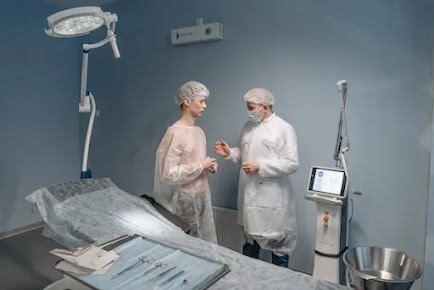Everything You Need To Know About Medical Gowns
To protect themselves and their patients from disease, healthcare staff must constantly wear a complete set of protective equipment. A medical robe is one of these items of equipment. Pharmpak is the ideal choice if you need a medical gown and are looking for a top Isolation gown supplier.
Simultaneously, several medical gowns are utilized for particular scenarios requiring vital protective equipment or enhanced protection. In this blog, we will learn about medical gowns, their wide varieties, and their various levels.
What Exactly Are Medical Gowns?
Healthcare workers wear medical gowns as a form of personal protection. Different kinds of these gowns can be used for things like surgeries and in the operating room.
This safety gear protects the host from getting sick when contacting infected solids or liquids, like respiratory droplets. Medical gowns are also helpful when dealing with patients who are weak or who can't fight off germs because these gowns keep germs from getting to these patients.
In surgical gowns, some places are critical. These critical zones are where people are most likely to come into direct contact with things that could be infectious, like bodily fluids. These are on the gown's sleeves and in the middle.
To protect the person wearing these gowns, they must be tied properly. When they get dirty, or the person has to leave the area, they must take off the gown, throw it away, and wash their hands.
Different Kinds of Medical Gowns
Hospitals and other healthcare centres must provide high-quality PPE to keep their staff members secure and at low risk while working. Protective apparel for doctors and other medical professionals comes in various styles. Here are a few of the PPE gowns that are most frequently used.
1. Surgical Gowns
Medical devices classified as Class II include surgical gowns, which require 501(k) premarket notice. These protective medical gowns must meet a very high-quality standard because they are subject to FDA regulation in the United States. They are made to be worn by any healthcare professional engaged in surgery to safeguard themselves and the patient from spreading potentially dangerous substances, bodily fluids, and harmful bacteria.
To increase safety and sanitization levels in a surgical setting, you must identify vital protective zones. The front of the body, from the shoulders to the knees, and from the wrists to the right above the elbow are critical zones. These robes can be used at danger levels ranging from 1 to 4. To provide clarity in urgent medical situations, they are specifically labelled as "surgery robes."
2. Non-surgical Gowns
Non-surgical gowns should not be used in places with a medium to high risk of contamination or during invasive procedures like surgery. They fall under the Class I medical device category and are exempt from premarket approval. They mainly guard the wearer against spreading fluids or pathogens in low-risk medical settings, including a standard physical checkup.
These gowns may resemble ones intended for surgery in appearance. They must perform at the highest levels of liquid barrier performance in their classification to protect the vital zones.
All other parts of the gown, except the bindings, cuffs, and hems, are crucial protection zones. The gown's liquid barrier protection should extend to the seams as well.
3. Isolations Gowns
Although they can be worn during invasive medical procedures, surgical isolation gowns are only intended for medium- to high-risk settings. A bigger critical zone of protection is required in situations with a higher likelihood of contamination. For many medical situations, traditional surgical gowns are appropriate. Similar to surgical gowns, these garments require a 501(k) premarket notice.
Isolation gowns are both reusable and disposable in hospitals. However, disposable gowns make up 80% of hospital supplies. Single-use gowns are typically produced using synthetic fibres like polyester, polypropylene, and polyethene as basic materials. Each time they are worn, reusable gowns need to be washed. Isolation gowns with several uses can be produced from either 100% cotton, 100% polyester, or a combination of the two.
Final Thoughts
Health professionals must wear medical gowns in certain circumstances, such as routine care, trauma room cases, and surgeries. Healthcare professionals should always wear the proper isolation gown for their health and safety. Furthermore, spending money on high-quality products while buying PPE is essential, ensuring the greatest safety for staff members, clients, guests, and other hospital personnel. Pharmpak offers top-notch personal protective equipment (PPE), such as medical gowns, respirators, face masks, gloves, and hand sanitiser. In other words, Pharmpak is the top Isolation gown supplier.

.jpg)
Comments
Post a Comment